It’s Here! Confluent’s 2026 Data + AI Predictions Report | Download Now
Data Governance – Key Definitions & Best Practices
In a world where businesses are heavily reliant on data to operate, compete, and grow, effective data governance is key to turning data into reliable, reusable business assets. Strong governance ensures data is trusted, secure, and accessible—which fuels data reusability through data products and drives faster time to market.
What Is Data Governance?
Data governance consists of standards, policies and procedures an organization implements to ensure safe and proper use of its business data throughout the data life cycle. A core component of an overall data management strategy, strong governance builds trust in data, promotes (re)usability, prevents misuse, and is essential for complying with growing privacy regulations.
Data governance encompasses all kinds of data—structured, unstructured, transactional—and spans key systems like data lakes and data warehouses, business intelligent (BI) tools, and real-time data pipelines. Strong governance ensures data across these environments are accurate, secure, and accessible—ultimately powering trusted insights and faster decisions.
See Instacart’s story to learn how Confluent ensures data accuracy and discoverability.
How Data Governance Works
Data governance works through a combination of people, processes, and technology to help set standards for how data is managed and used across the organization. At its core, a data governance program consists of three key areas:
-
The team that manages all aspects of your organization’s data, with clearly defined roles and responsibilities. These include a senior executive to oversee the program, a governance team to manage it, a steering committee or council to act as the governing body, and data stewards.
-
The processes and procedures for how data should be controlled, audited, secured, and monitored.
-
The technology that enables people, and streamlines processes, with tools like standardization, monitoring, collaboration, and reporting, just to name a few.
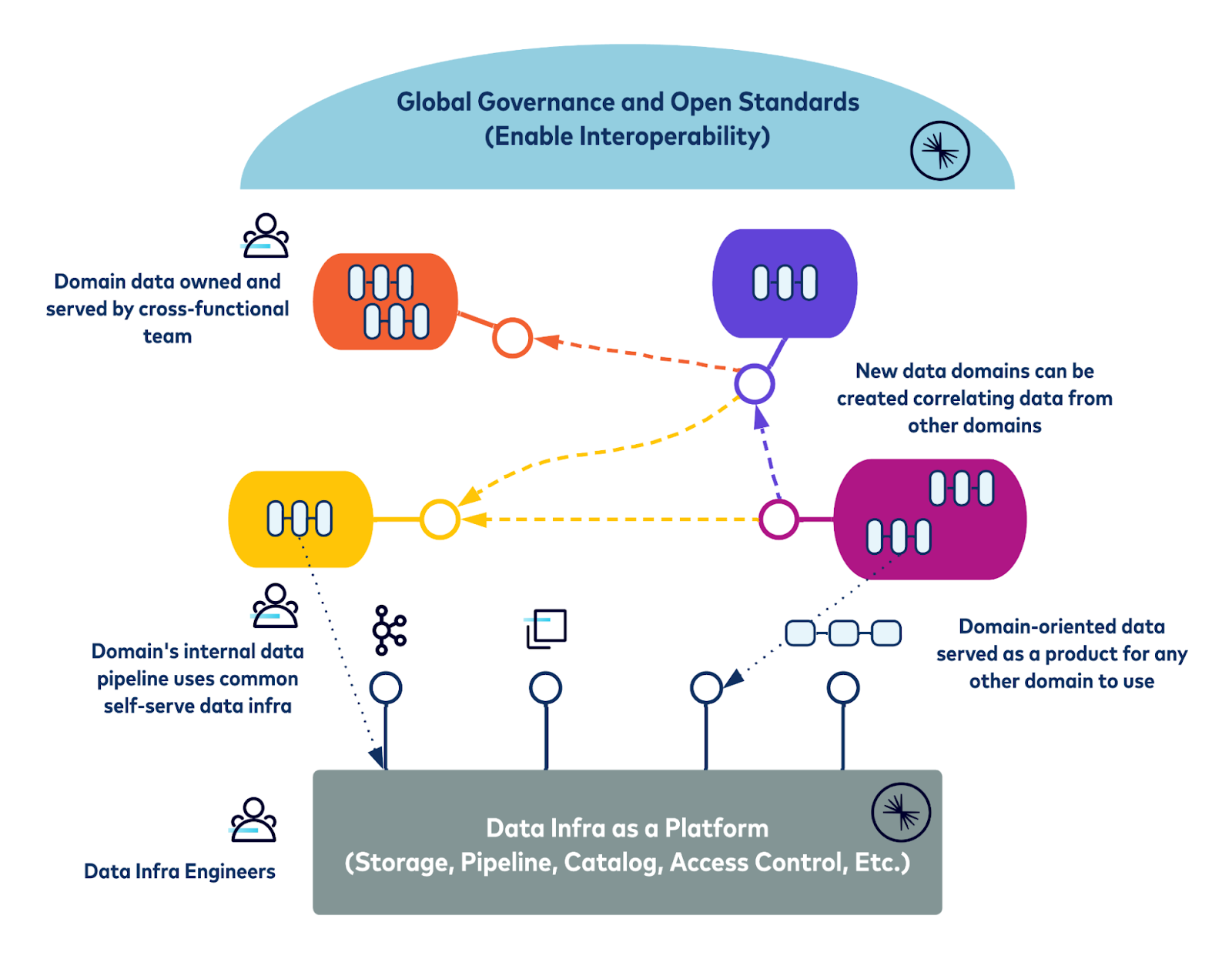
Why Having Robust Data Governance Matters
Without effective data governance, data inconsistencies across systems—like different product codes in inventory, sales, and fulfillment—can lead to integration challenges, operational issues, and unreliable analytics.
Poor governance can further jeopardize compliance with privacy laws like EU’s General Data Protection Regulation (GDPR) and California’s Consumer Protection Act (CCPA). Strong governance creates shared standards, ensuring consistency and regulatory readiness.
As more organizations leverage real-time data, the need for organizational governance over data in motion has never been more important. While Apache Kafka®, the de facto standard for real-time data streaming, with its ability to handle real-time data feeds, plays a role in data governance—it fails to deliver governance capabilities required at enterprise scale. A complete data streaming platform like Confluent offers a fully managed suite of advanced governance tools businesses need to reliably capture, share, and act on data the moment it’s created. The result? Organizations can drive innovation and value at the speed of business.
See Capital One’s story to learn how Confluent’s enterprise-ready data streaming platform helped this top U.S. bank to break down costly data silos.
Key Terms to Know for Mastering Data Governance
Data accuracy: Data accuracy refers to the degree to which data is correct, precise, and free from errors.
Data integrity: Data integrity is the accuracy, completeness, and quality of data as it’s maintained over time and across formats.
Data consistency: Data consistency refers to the state of data in which all copies or instances are the same across all systems and databases.
Data lineage: Data lineage is the process of tracking the flow of data over time, providing a clear understanding of where the data originated, how it has changed, and its ultimate destination within the data pipeline.
Data completeness: Data completeness is the extent to which all required and expected data elements are present within a dataset, ensuring no essential information is missing.
Data accessibility: Data accessibility refers to the ease with which users can access, retrieve, and use data within an organization or system—ultimately unlocking the data to make it useful.
Data usability: Data usability refers to the ease with which data can be accessed, understood, and used to inform business decisions.
Data security: Data security is the practice of protecting digital information from unauthorized access, corruption or theft throughout its entire lifecycle.
Data privacy: Data privacy, focused on the individual rights of the users who own the data, is the principle that a person should have control over their personal data, including the ability to decide how organizations collect, store and use their data.
Regulatory compliance: Regulatory compliance is the process of adhering to laws, rules, regulations, and standards like—FIPS, HIPAA, or GDPR—set forth by governments and other regulatory bodies.
Data contracts: A data contract defines the structure, format, semantics, quality, and terms of use for exchanging data between a data provider and their consumers.
Data owners: A data owner is an individual or a specific department entrusted with authoritative rights over particular datasets within an organization.
Data steward: A data steward is an oversight or data governance role within an organization, responsible for overseeing a subset of an organization's information to ensure its quality, integrity, and security.
Data catalog: A data catalog is a detailed inventory of all data assets in an organization, designed to help data professionals quickly find the most appropriate data for any analytical or business purpose.
Data product: A data product is a well-governed, reusable, and accessible data asset designed to power specific business use cases.
Master data management: The discipline and technology used to integrate data from multiple sources to eliminate redundancies and discrepancies and enrich the data to enhance its value.
Benefits of Data Governance
When done right, data governance unlocks a range of benefits that help organizations turn data into a trusted, strategic asset. Here’s an overview of the benefits it drives:
Democratized Access to High-Quality Data
Data governance ensures teams have fast, secure access to high-quality trusted data. By enforcing clear standards and ownership, it eliminates errors and inconsistencies—so teams spend less time fixing data issues and more time using it to drive business outcomes.
Accelerated Data-Driven Decision-Making
Effective data governance ensures data is accurate, consistent, and easy to access and share, so teams can derive insights and drive use cases without wasting time resolving data issues. By streamlining how data is managed and shared across the organization, data governance unlocks data-driven decision-making that’s not only more accurate, but also faster and more consistent.
See how Victoria’s Secret drives faster data-driven decisions with Confluent.
Compliant With Industry and Regional Data Regulations
Data governance supports compliance by ensuring sensitive data is properly classified, protected, and tracked. With strong governance, they can respond to audits faster and reduce the risk of costly compliance violations.
Reduce Data Management Costs
Data governance helps reduce data management costs by improving data quality at the source, automating oversight, and minimizing time spent on rework, integration fixes, and compliance fire drills.
Reliable, Consistent Security Policy Enforcement
Enterprise security is inherently multi-faceted and difficult to implement fully. Data governance specifies who manages key business data, who grants access to it, and who makes it available for auditing or another external review. When important content is stored with a cloud provider, governance documents the division of responsibility for that content’s availability and accessibility. Confluent offers integrated solutions that make it easier to implement your business’ policies, including support for single sign-on (SSO), RBAC, encryption at-rest and in-transit, auditing logs, and other solutions.
See 10x Banking’s story to learn how Confluent ensures enterprise-grade security.
Top Data Governance Challenges
While the benefits of good data governance are clear, many organizations still face significant challenges when trying to put it into practice:
Lack of Executive Buy-In
Funding data governance projects alone isn’t enough. Without active leadership support, data governance initiatives often lack the funding, visibility, and authority needed to succeed and scale.
Siloed Systems and Teams
When data is locked in disparate systems or owned by isolated teams, enforcing consistent governance becomes fragmented and inefficient. In fact, according to the 2025 Data Streaming Report, 63% IT leaders cite data silos as a key data integration challenge.
Lack of Clear Ownership
One of the primary data governance challenges is ensuring that each person has a well-defined role and appropriate permissions. Without clear roles (e.g., data owners, stewards), no one is responsible for maintaining data standards or resolving issues. According to the report, 63% IT leaders cite fragmented ownership of data as a key challenge.
Poor Data Quality
Inaccurate, incomplete, duplicate data or outdated data undermines trust and leads to unreliable insights. 67% IT leaders cite poor data quality as a key challenge in the report. Without strong governance, it’s hard to identify and fix these issues at scale.
Difficulty Scaling Governance
What works for a few teams or systems breaks down as data grows across tools, departments, and use cases. As your organization grows, your data governance framework must be able to scale and adapt to accommodate new users, data sources, and use cases. In fact, 63% IT leaders cite governance-related disjoints as a key challenge when it comes to data integration.
Keys to a Successful Governance Strategy
Building a successful data governance strategy requires both executive vision and hands-on execution—aligning business goals with tactical steps that ensure data is trusted, well-managed and ready to drive value:
-
Align governance goals with business priorities: Tie governance to real outcomes like better decision-making, AI readiness, compliance, or faster time to market.
-
Secure leadership buy-in and cross-functional support: Ensure executive sponsorship and involve stakeholders across IT, data, security, and the business.
-
Define clear roles and responsibilities: Establish data owners, stewards, and custodians to create accountability and streamline decision-making.
-
Set and enforce data standards: Create common definitions, naming conventions, metadata rules, and classification policies.
-
Implement the right tools: Take advantage of a holistic platform that supports data cataloging, lineage tracking, quality monitoring, and access control.
-
Make data accessible and secure: Enable governed self-service with role-based access, data masking, and visibility into trusted sources.
-
Measure impact and iterate: Track improvements in data quality, access efficiency, and risk reduction—then refine your approach.
-
Build a culture of data literacy: Educate teams on how to find, understand, and use governed data confidently.
Getting Started With Proper Data Governance
Data as a strategic asset is quickly becoming the standard for data-driven businesses. To put data in motion, businesses need a holistic data streaming platform that not only makes real-time data easily accessible at scale but also includes robust governance capabilities to ensure governance of streaming data. This helps manage data stream quality and lineage while enabling teams to share data streams faster without bypassing controls for data quality or compliances.
Confluent has built the industry's first governance solution for data streams, which allows users to understand ownership and access trusted data using self-service capabilities. With features such as Stream Quality, Stream Catalog, Stream Lineage, and Data Portal, Confluent’s Stream Governance suite fosters the collaboration and knowledge-sharing necessary to become a data-centric business while remaining compliant with ever-evolving data regulations.
Stream Governance empowers your distributed teams to discover, understand, and trust their data to harness its full value. When distributed teams are able to discover, understand, and trust their data, you can accelerate development of the real-time experiences that drive differentiation and increase customer satisfaction while upholding strict compliance requirements.
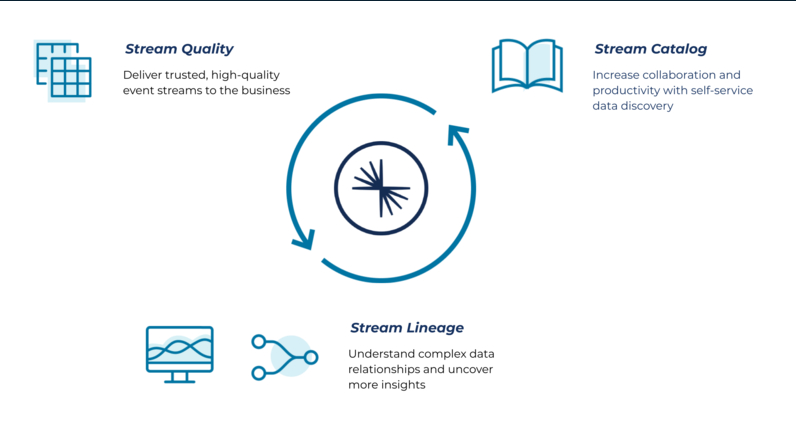
See why L’Oreal moved to Confluent to meet their current streaming needs and build an architecture to meet their future needs for cohesive governance and stream processing.
Stream Governance – Real-Time Data Governance With Confluent
Confluent’s Stream Governance delivers the full suite of tools organizations need to trust and manage real-time data. With features such as Stream Quality, Stream Catalog, Stream Lineage, and Data Portal, Confluent’s Stream Governance suite fosters the collaboration and knowledge-sharing necessary to become a data-centric business while remaining compliant with ever-evolving data regulations.
Stream Quality
Built-in Schema Registry and Data Quality Rules enforce data contracts and validate schemes at ingestion, helping deliver trusted, high-quality data streams to the business and maintain data integrity.
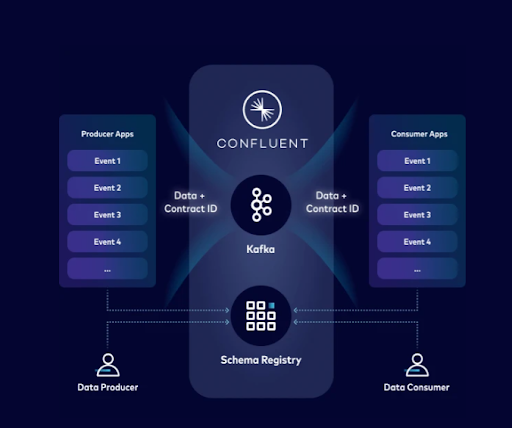
Stream Catalog
Increases collaboration and productivity with self-service data discovery so teams can classify, organize, and find the event streams they need—without compromising security.
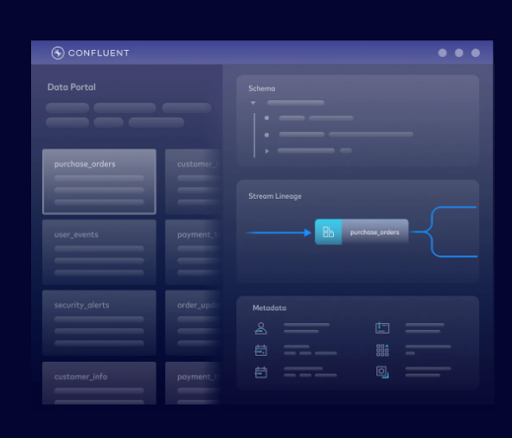
Stream Lineage
Helps understand complex data relationships and uncover more insights with interactive, end-to-end maps of your data streams.
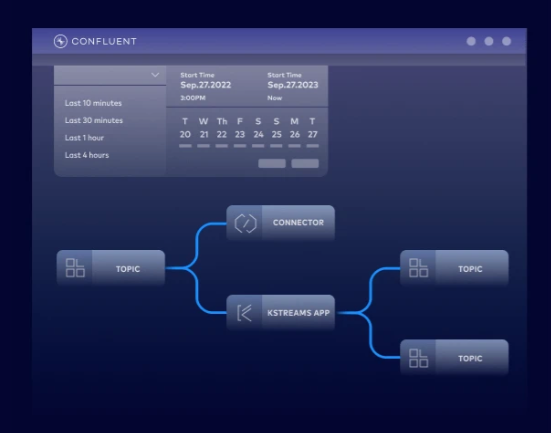
With a fully managed, cloud-native platform, Confluent makes it easy to scale governance alongside your Kafka deployments—helping you unlock the power of real-time data.
Ready to learn more about Confluent and the business impact of streams-first data governance? Join industry leaders and technology visionaries to learn more at Current:The Data Streaming Event. Or explore keynote and session recordings from past events like “Effective Data Lineage Strategies for Real-Time Systems.”
Register for Current or Watch a Stream Governance Webinar